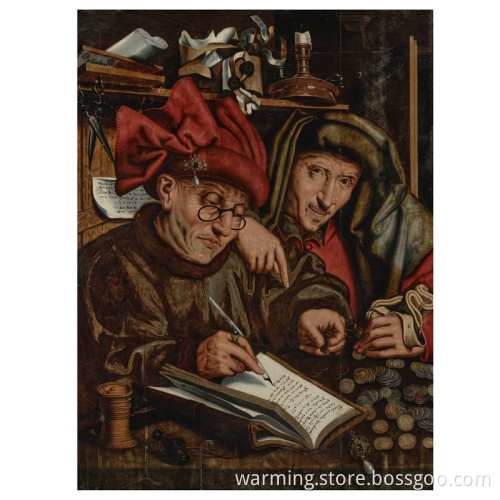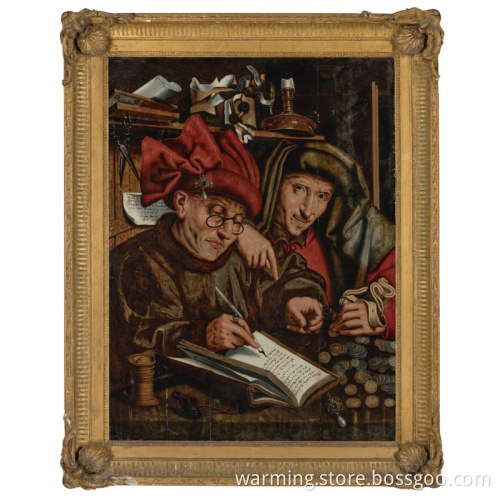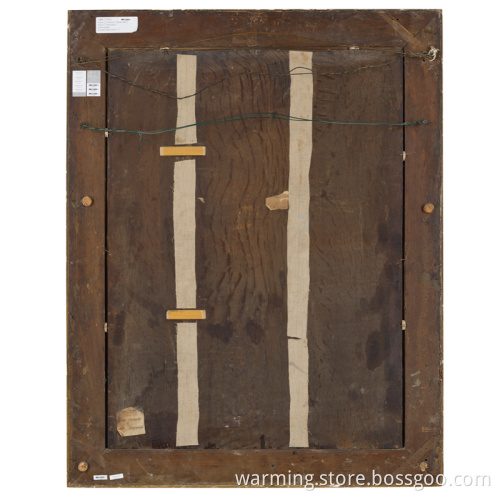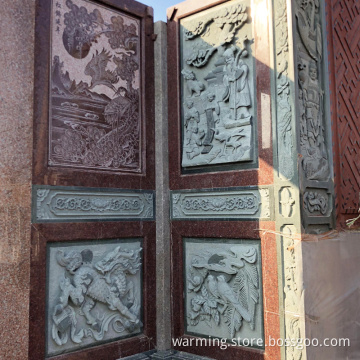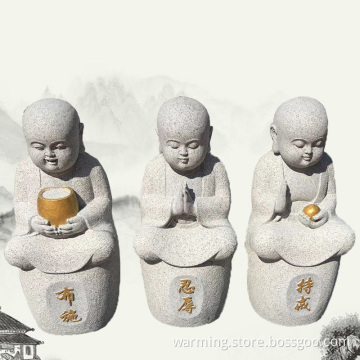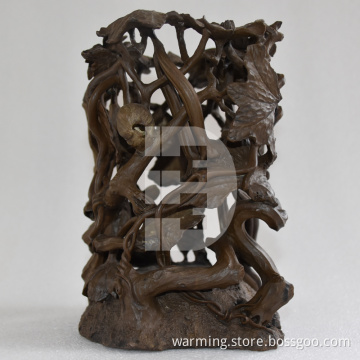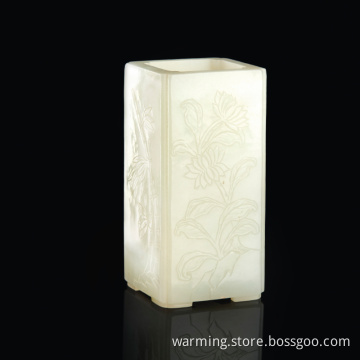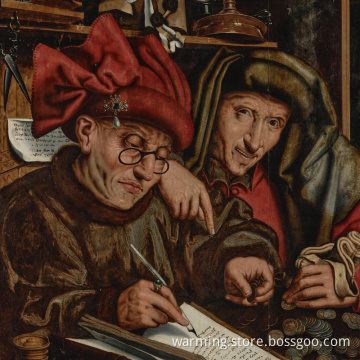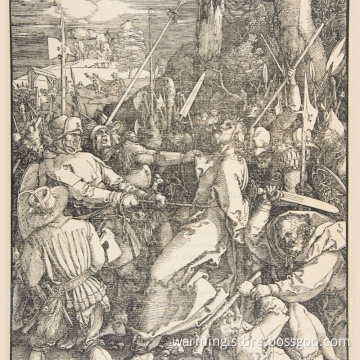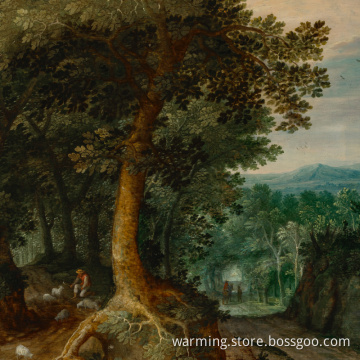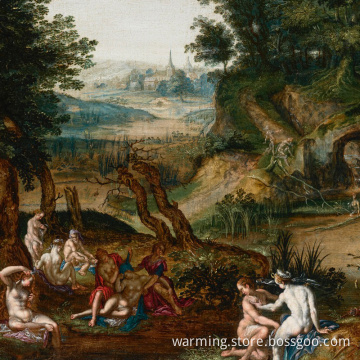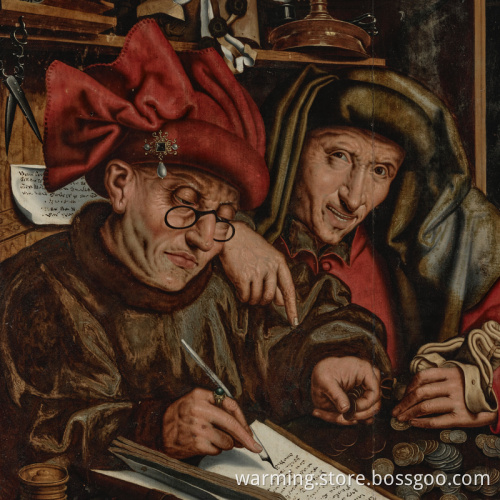
A painting of two gentlemen in ancient costume
$200.00 - $100000.00/Piece/Pieces
- Min. Order:
- 1 Piece/Pieces
- Min. Order:
- 1 Piece/Pieces
- Transportation:
- Ocean, Air
- Port:
- Chongqing
Quantity:
Your message must be between 20 to 2000 characters
Contact NowBasic Info
Basic Info
| Place of Origin: | Chongqing |
|---|---|
| Productivity: | 1 Piece/Pieces per Month |
| Supply Ability: | 1 Piece/Pieces per Month |
| Payment Type: | T/T,Western Union |
| Incoterm: | FOB |
| Transportation: | Ocean,Air |
| Port: | Chongqing |
Product Description
Product Description
Christie's auction is a very detailed version of this famous paintings, which is one of the formative images of the late Flemish genre painting. It depicts two gentlemen in ancient costume writing accounts and counting money. This is a popular image. There are about 60 known versions in the art market, dating back to the 16th and early 17th centuries; These differences lie in the complexity of clothing and the details of still life elements. Although many scholars believe that the original work belongs to Marinas van Rameswaler, Larry Silver recently believed that the most important work was the painting in the Liechtenstein Prince Collection in Vaduz and Vienna, which belongs to the work of Quentin Masses (see L. Silver), Masses and Money: rediscovered tax collectors, The Journal of Historians of Netherlands Art, summer 2015.
One reason for the popular success of the image was its positioning at the intersection between economic necessity and socially acceptable practices. Quinten Massys’s picture was created in Antwerp at a time of financial crisis during the 1520s, when war between Emperor Charles V and his rival France led to a reduction in international shipping and the German Peasants War of 1525 helped to cut off silver and copper shipments. In these circumstances, the value of gold inflated, making the emphatic representation of the large gold coins in the Massys’s composition especially important. This historical framework was contrasted with the deep-rooted social antipathy towards tax collectors; indeed, a Netherlandish proverb of the time proclaimed that ‘a usurer, a miller, a money-changer, and a tax-collector are Lucifer’s four evangelists’. Massys’s painting and its subsequent versions play on these ideas of political and social greed, whilst adding whimsical elements – the knowing smile of the gentleman to the right, the outlandish headgear, the wart on the end of scribe’s nose – that allowed patrons to laugh with the artist at the issues of their time.
The present version shares many details with the Lichtenstein painting, notably in the inclusion of specifically identifiable coins. These include the gold florin and the gold ducat of King Charles I of Savoy, and the gold double ducat of Gugliermo II Paleologus, marquis de Montferrat. In its exact details, however, the present painting relates most closely to a version in the Alte Pinakothek, Munich, currently attributed to van Reymerswaele (inv. no. L 1048).
One reason for the popular success of the image was its positioning at the intersection between economic necessity and socially acceptable practices. Quinten Massys’s picture was created in Antwerp at a time of financial crisis during the 1520s, when war between Emperor Charles V and his rival France led to a reduction in international shipping and the German Peasants War of 1525 helped to cut off silver and copper shipments. In these circumstances, the value of gold inflated, making the emphatic representation of the large gold coins in the Massys’s composition especially important. This historical framework was contrasted with the deep-rooted social antipathy towards tax collectors; indeed, a Netherlandish proverb of the time proclaimed that ‘a usurer, a miller, a money-changer, and a tax-collector are Lucifer’s four evangelists’. Massys’s painting and its subsequent versions play on these ideas of political and social greed, whilst adding whimsical elements – the knowing smile of the gentleman to the right, the outlandish headgear, the wart on the end of scribe’s nose – that allowed patrons to laugh with the artist at the issues of their time.
The present version shares many details with the Lichtenstein painting, notably in the inclusion of specifically identifiable coins. These include the gold florin and the gold ducat of King Charles I of Savoy, and the gold double ducat of Gugliermo II Paleologus, marquis de Montferrat. In its exact details, however, the present painting relates most closely to a version in the Alte Pinakothek, Munich, currently attributed to van Reymerswaele (inv. no. L 1048).
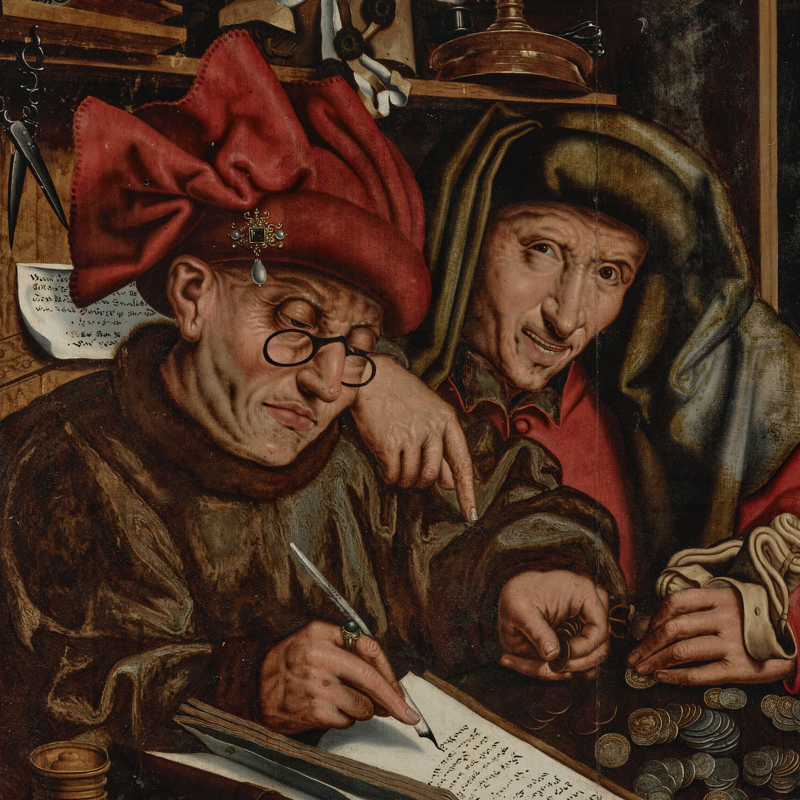
Related Keywords
Related Keywords


